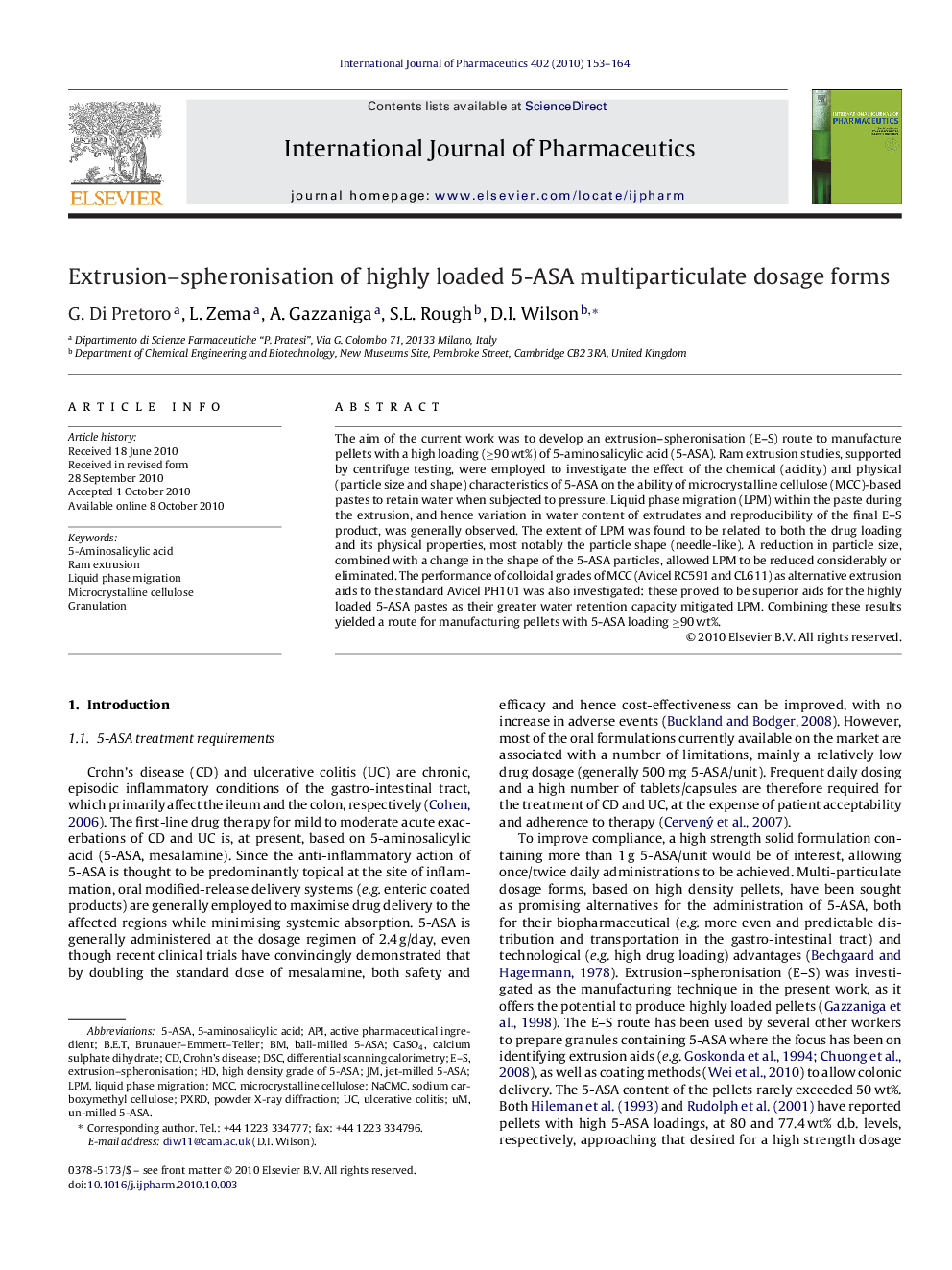| Article ID | Journal | Published Year | Pages | File Type |
|---|---|---|---|---|
| 2503707 | International Journal of Pharmaceutics | 2010 | 12 Pages |
The aim of the current work was to develop an extrusion–spheronisation (E–S) route to manufacture pellets with a high loading (≥90 wt%) of 5-aminosalicylic acid (5-ASA). Ram extrusion studies, supported by centrifuge testing, were employed to investigate the effect of the chemical (acidity) and physical (particle size and shape) characteristics of 5-ASA on the ability of microcrystalline cellulose (MCC)-based pastes to retain water when subjected to pressure. Liquid phase migration (LPM) within the paste during the extrusion, and hence variation in water content of extrudates and reproducibility of the final E–S product, was generally observed. The extent of LPM was found to be related to both the drug loading and its physical properties, most notably the particle shape (needle-like). A reduction in particle size, combined with a change in the shape of the 5-ASA particles, allowed LPM to be reduced considerably or eliminated. The performance of colloidal grades of MCC (Avicel RC591 and CL611) as alternative extrusion aids to the standard Avicel PH101 was also investigated: these proved to be superior aids for the highly loaded 5-ASA pastes as their greater water retention capacity mitigated LPM. Combining these results yielded a route for manufacturing pellets with 5-ASA loading ≥90 wt%.
Graphical abstractA route to generate pellets with high loading (≥90 wt%) of 5-aminosalicylic acid and acceptable quality by extrusion–spheronisation was developed by controlling particle shape and binder liquid redistribution.Figure optionsDownload full-size imageDownload as PowerPoint slide
